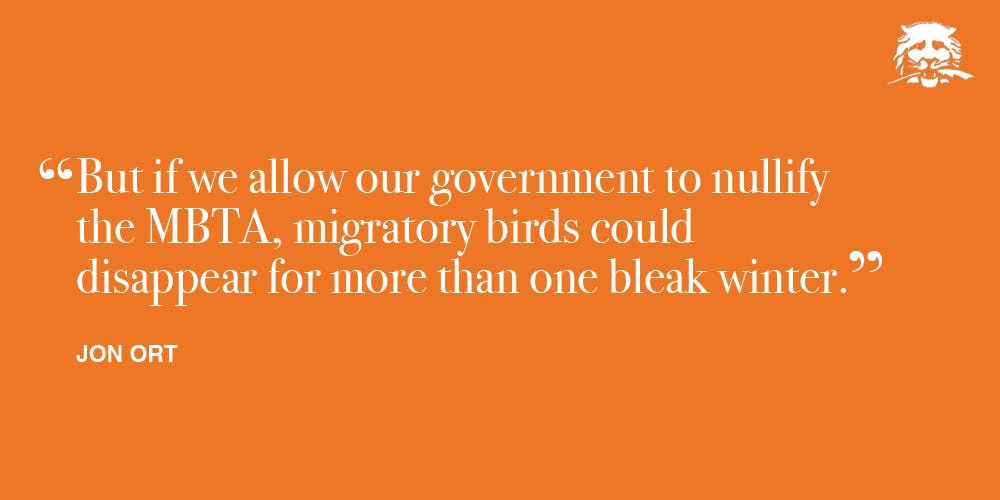An iridescent blur darted and dived before me, as it cut elegant arcs across the sky. Several seconds later, I recognized the fleet form as a purple martin, Progne subis. It disappeared behind a grove of scraggly oaks, but its fellow aerial acrobats continued to carve the sky. The purple martin is just one of dozens of Neotropical migratory bird species that anyone, from career ornithologist to curious observer, may find in the Institute Woods just south of campus.
Humans have all but razed the landscape that purple martins behold from above. Railroad tracks and runways, suburban divisions and skyscrapers have parceled our country into innumerable plots. Although we usually understand the industrial growth of the last century as “progress,” such activity hinders purple martins’ own progress towards their breeding and wintering grounds.
A century ago, farsighted environmentalists understood the impending threat: this year, the Migratory Bird Treaty Act of 1918 (MBTA), which protects migratory birds that transit the Americas, turns one hundred. But 2018 may be the MBTA’s last authentic anniversary, as the Trump administration has vowed to slash the law’s central provision, which requires companies to take reasonable precautions to help birds.
Per the 1918 terms, the MBTA holds commercial enterprises responsible for migratory bird deaths, regardless of intention. For example, an energy company could be held liable if its wind turbines killed migratory birds. Similarly, if birds became entangled in high nets, of the sort found along the Princeton golf course, the government could prosecute the owner.
Under Secretary Ryan Zinke, however, the Department of the Interior has released new guidelines, which authorize prosecution only against individuals who intentionally kill birds. In both of the aforementioned, unintended cases, migratory birds would lose all proverbial recourse. By removing any legal incentive for companies to protect migratory birds, this interpretation condones reckless development.
Despite being applicable to any fatal encounter, the MBTA is not an instance of big-government overreach, as the White House contends. The MBTA’s proponents understand that it cannot be invoked every time a bird dies; in fact, former Department of the Interior officials endorse selective enforcement of the Treaty. Accordingly, we should expect the companies that receive our business to follow reasonable precautions—and we should hold them responsible if they do not.
Without Neotropical migratory birds, ecosystems across the Americas would unravel. By eating millions of locusts, ants, and mosquitoes every year, migratory birds act as an important natural control on insect populations. Many species of plant depend upon migratory birds to pollinate or disperse their seeds. Ecologists often consider migratory birds to be “indicator species,” because the size and success of their populations reflect wider trends about the health of the ecosystems they inhabit.
As a University that prides itself in sustainability, we ought to protect the migratory birds that inhabit our campus every spring. Recent months have seen significant student activism against Compressor Station 206, a natural gas processing facility that could be built near the University. The presence of nesting migratory birds has helped to postpone the station’s construction. Therefore, upholding the MBTA should become an equally important priority to students who oppose Station 206. Likewise, our own development projects, such as the new residential college to be built near Lake Carnegie, should incorporate the proper protections and conserve natural habitat nearby.

According to international classifications, the purple martin, as well as other MBTA species, are not critically endangered. Nonetheless, the situation for birds, and for wildlife more broadly, remains dire. The North American Bird Conservation Initiative estimates that more than one-third of North American birds require “urgent conservation action.” The threat to the MBTA comes as the Department of the Interior attempts to renegotiate the Endangered Species Act (ESA), which safeguards some fifteen hundred endemic species, in favor of industrial interests. With the ESA’s future uncertain, the MBTA is all the more important to stave off catastrophic damage.
As a University that prides itself in “the service of humanity,” we ought also to ensure that our campus shelters migratory birds. Unlike national symbols such as the bald eagle, migratory birds do not “belong” to any one nation. The purple martin inhabits all of Central America, Paraguay, Brazil, Bolivia, Argentina, Canada, and the United States. Migratory birds transcend borders. Protecting them is nothing less than a duty if Princeton is to act for all.
Just as I identified the curving streak as a purple martin, it plunged behind dense foliage. Alone, I mused on the eternal natural cycle that compels migratory birds to vanish and reappear with each passing season. Fortunately, purple martins will return to the Institute Woods next spring, and the one after that. But if we allow our government to nullify the MBTA, migratory birds could disappear for more than one bleak winter.
Jon Ort is an Associate Opinion Editor of the Daily Princetonian. This piece represents the views of the Associate Opinion Editor only. He can be reached at jaort@princeton.edu.









